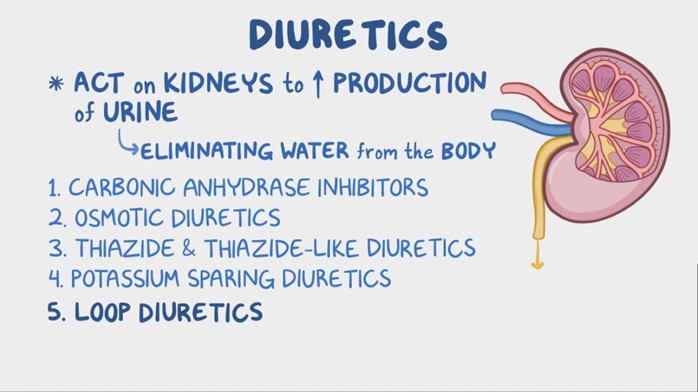A nurse is providing dietary teaching to a client newly diagnosed with celiac disease. Which of the following information should the nurse include in the teaching?
Dietary restrictions will eventually allow the intake of gluten to resume.
This condition may cause secondary lactose intolerance.
Nutritional therapy for this condition includes limiting proteins and calories.
A normal diet can resume after a period of remission.
The Correct Answer is B
Choice A reason: Dietary restrictions will not eventually allow the intake of gluten to resume. Gluten is a protein found in wheat, barley, rye, and some oats. It causes damage to the small intestine in people with celiac disease. The only treatment for celiac disease is a lifelong gluten-free diet.
Choice B reason: This condition may cause secondary lactose intolerance. Lactose is a sugar found in milk and dairy products. It is broken down by an enzyme called lactase in the small intestine. People with celiac disease may have reduced levels of lactase due to the damage to the small intestine caused by gluten. This can lead to lactose intolerance, which is the inability to digest lactose properly. Symptoms of lactose intolerance include bloating, gas, diarrhea, and abdominal pain after consuming dairy products.
Choice C reason: Nutritional therapy for this condition does not include limiting proteins and calories. People with celiac disease need adequate amounts of proteins and calories to maintain their health and prevent malnutrition. They also need to ensure that they get enough vitamins, minerals, and fiber from gluten-free sources.
Choice D reason: A normal diet cannot resume after a period of remission. Celiac disease is a chronic autoimmune disorder that does not have a cure. Even if the symptoms improve or disappear, the damage to the small intestine can still occur if gluten is consumed. Therefore, a strict gluten-free diet must be followed for life.
Nursing Test Bank
Naxlex Comprehensive Predictor Exams
Related Questions
Correct Answer is B
Explanation
Choice A reason: Feedings should not be accompanied by nonnutritive sucking. Nonnutritive sucking is the act of sucking on a pacifier, finger, or other object without getting any nutrition. Nonnutritive sucking can interfere with the establishment of breastfeeding, cause nipple confusion, and reduce milk supply.
Choice B reason: Feedings should be on demand. On demand feeding means feeding the newborn whenever they show signs of hunger, such as rooting, sucking, or crying. On demand feeding helps the newborn regulate their appetite, meet their nutritional needs, and bond with their caregiver.
Choice C reason: Feedings should not begin within 1 hr after birth. This instruction is applicable for breastfeeding, not bottle feeding. Breastfeeding should begin within 1 hr after birth to initiate milk production, stimulate uterine contractions, and transfer colostrum to the newborn. Bottle feeding can be delayed until the newborn is stable and alert.
Choice D reason: Feedings may not occur in clusters. Cluster feeding means feeding the newborn more frequently and for longer periods of time during certain times of the day or night. Cluster feeding is common in breastfed newborns, especially during growth spurts or developmental leaps. Bottle fed newborns may not exhibit cluster feeding, as they tend to have more consistent and predictable feeding patterns.
Correct Answer is A
Explanation
Choice A reason: Navy beans and ham are good sources of potassium, which can help prevent hypokalemia, a common side effect of some diuretics. Hypokalemia can cause muscle weakness, cramps, fatigue, and cardiac arrhythmias.
Choice B reason: Cheddar cheese is high in sodium, which can cause fluid retention and increase blood pressure. Sodium intake should be limited when taking diuretics, as they can also cause hyponatremia, a condition of low sodium levels in the blood.
Choice C reason: Beef broth is also high in sodium, which can have the same effects as cheddar cheese. In addition, beef broth is high in purines, which can increase uric acid levels and cause gout, another possible side effect of some diuretics.
Choice D reason: Baked potato is high in carbohydrates, which can raise blood glucose levels and worsen diabetes, a risk factor for hypertension. Some diuretics can also cause hyperglycemia, a condition of high blood glucose levels in the blood.

Whether you are a student looking to ace your exams or a practicing nurse seeking to enhance your expertise , our nursing education contents will empower you with the confidence and competence to make a difference in the lives of patients and become a respected leader in the healthcare field.
Visit Naxlex, invest in your future and unlock endless possibilities with our unparalleled nursing education contents today
Report Wrong Answer on the Current Question
Do you disagree with the answer? If yes, what is your expected answer? Explain.
Kindly be descriptive with the issue you are facing.
